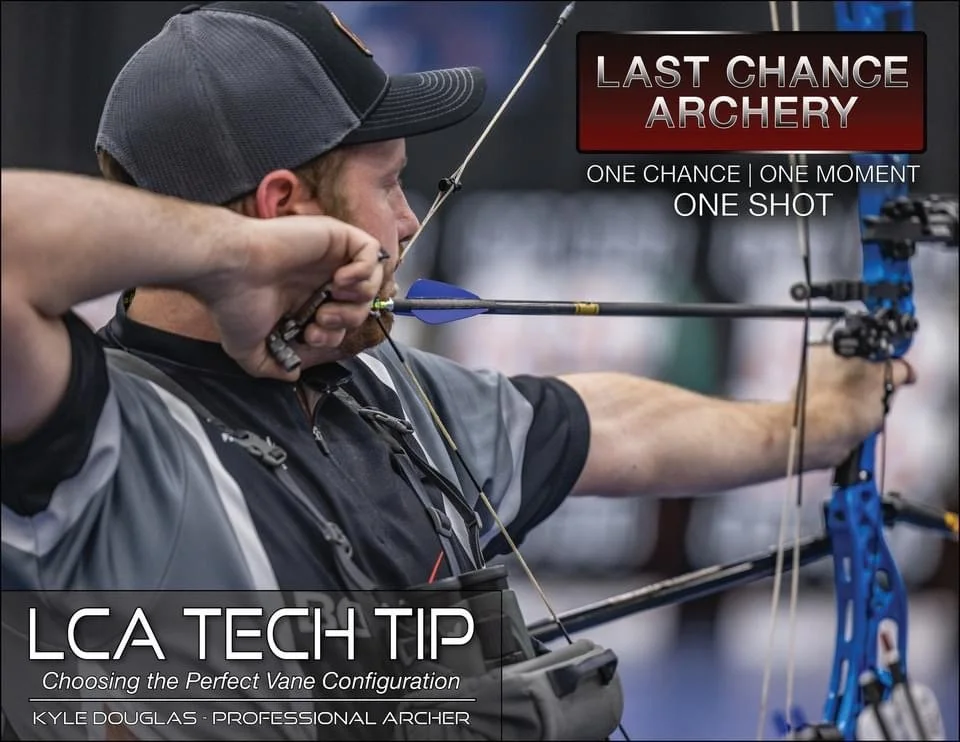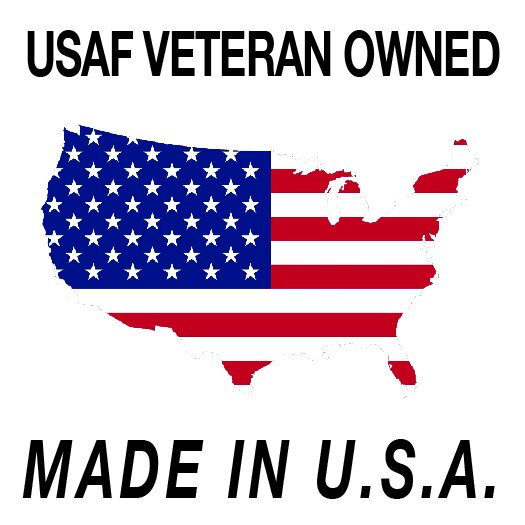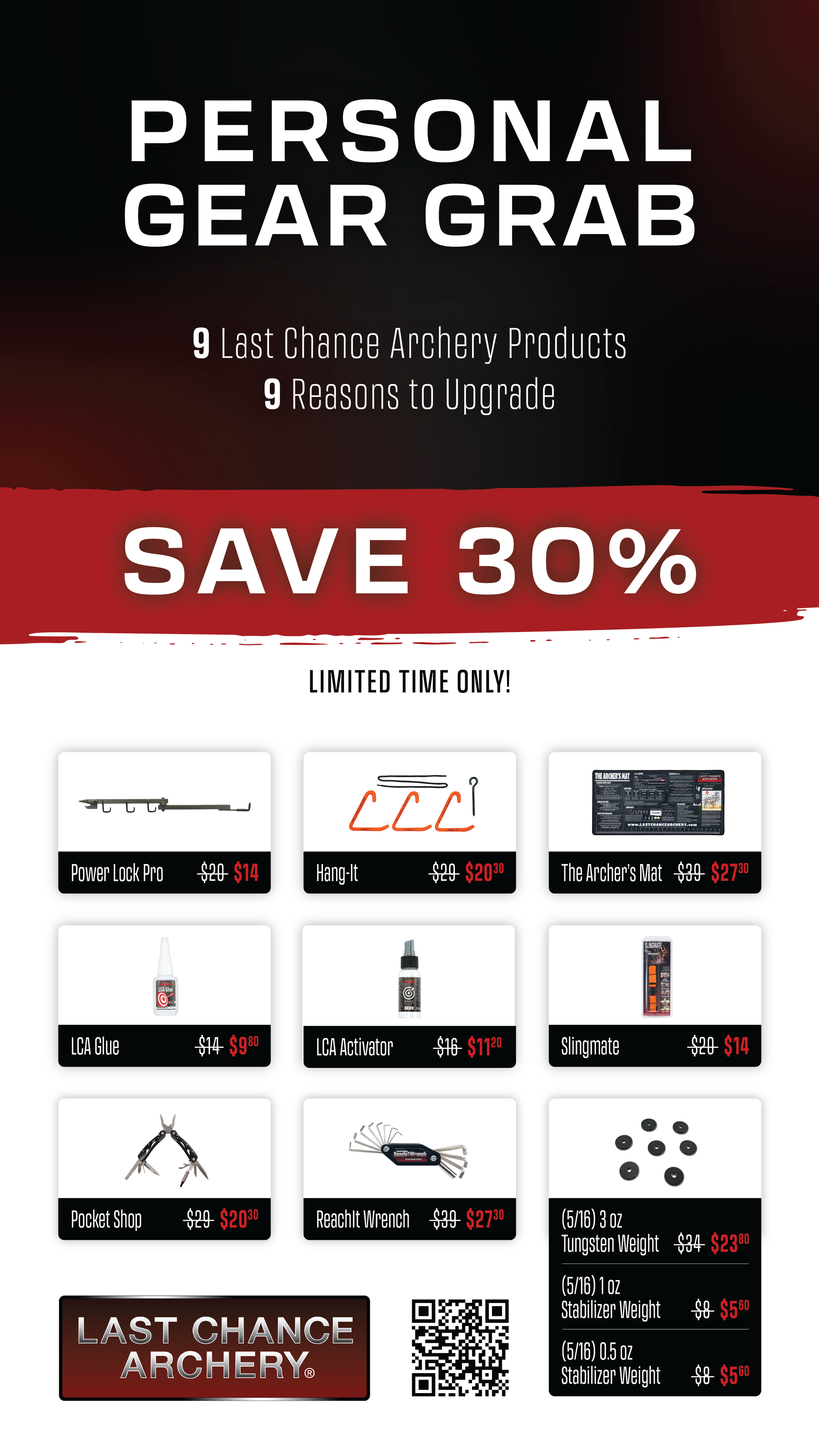"Choosing the perfect vane configuration" By Kyle Douglas
/Kyle’s product pick for fletching…
Deciding which vanes to use on your arrows can be a tricky process. In this article, I will cover some factors to consider when deciding how you are going to fletch your arrows. The first piece of information you will need is what the arrow will be used for. A hunting arrow will require a different amount of stabilization than a target arrow and different types of target arrows can be optimized for specific disciplines of target archery. Optimizing your fletching setup is to completely stabilize the arrow and add forgiveness to your setup while simultaneously trying to reduce wind drift as much as possible. For obvious reasons, a larger vane will drift more in the wind, and a smaller vane will not stabilize the arrow as easily.
There are four variables to examine when deciding how to fletch your arrows. The first of those is how many vanes you are going to use. Are you going to shoot a three or four-fletch pattern? In my opinion, four fletch stabilizes an arrow faster and adds more forgiveness, but three fletch is usually slightly quieter and adds less drag. Personally, I am a large proponent of four-fletch for most setups. I believe the increased forgiveness you gain when using a four-fletch over a three is worth sacrificing a little noise and drag. The difference in forgiveness becomes especially noticeable if I try to control fixed-blade broadheads or larger-diameter target arrows. The extra vane stabilizes the arrow quicker, and in turn, the arrow has less time to deviate from the intended flight path before it is corrected. I run four fletch on all my setups, but there are a few situations where it may not be beneficial. Shooters with low poundage and short draw lengths may want to consider a three-fletch to help reduce drag and arrow weight. Speed and trajectory are much more critical for these setups.
The second variable to consider is the fletching profile. Generally, the taller a vane gets, the more guidance it gives an arrow. However, a tall vane will make more noise and drift more in the wind than a shorter vane will. For outdoor target arrows, you will be looking to run the lowest profile vane possible to reduce wind drift. A small diameter shaft does not need as much stabilization; therefore a super low profile vane is sufficient and will reduce wind drift. 3D and Indoor arrows are generally larger diameter shafts and will require different vanes to stabilize properly. I have found high-profile vanes to be the most efficient at stabilizing large-diameter arrows because of the added leverage the height gives the vane. If two vanes have identical surface areas the taller vane will control an arrow easier. When shooting broadheads or large-diameter target arrows, I prefer a high-profile vane over a longer, lower-profile vane. In my experience, tall vanes will always tend to correct the arrow faster and be more forgiving.
While the length of the vane is less important than the height, it is still very pertinent. Longer vanes will provide more stabilization than shorter vanes of the same height. Short (length), tall vanes are not always better as sometimes a short vane just does not have enough surface area to adequately control the arrow. For example, on an indoor arrow, you could get away with using a 2” high-profile vane, but a 4” high-profile vane will stabilize faster and, in turn, is more forgiving. When you are only shooting 20 yards, you need the arrow to stabilize as quickly as possible, and since you are not dealing with wind drift, there is no downside to the longer vanes. On a 3D arrow, the opposite is true. You could shoot a 4” vane, but if there is any wind, you will get too much drift. It is worth sacrificing a little forgiveness to perform better in different weather conditions. On a small-diameter outdoor target arrow, you may opt for a short, low-profile vane because the extra length is unnecessary and will increase your wind drift.
The last consideration is how much helical or offset you need on your vanes. You want to match the amount of twist you put in your vanes to the style of archery they are being used for. If you add a bunch of helical to an outdoor target arrow, you may see groups start to open up at longer distances due to the increased drag slowing the arrow down too quickly. On the opposite end of the spectrum, you can only have a little helical on an indoor arrow since it only travels 20 yards and needs to stabilize very quickly. Typically for most arrows, between two and four degrees of helical/offset is sufficient. Large-diameter shafts and hunting arrows will need more stabilization and, therefore, a more aggressive helical. Smaller arrows will not need as much and will benefit from less drag at farther distances.
The final and most time-consuming part of the process is testing. You'll need to test each vane configuration before deciding which works best for you. When testing vanes, you are looking for forgiveness which can be difficult to see and quantify. The best way I have found to test vanes for forgiveness is by fletching half a dozen arrows with each configuration I want to test and shooting them each at different targets. Pin up two new target faces side by side and shoot one set of arrows into one face and another set into the other. After repeating this, you will see which target face has a tighter group with fewer fliers. When looking for forgiveness, you are trying to find the setup that makes your mistakes miss by the least amount. A truly forgiving setup will pleasantly surprise you when you make a bad shot, but your arrow doesn’t miss nearly as much as you thought it would. Repeat the testing process for each vane configuration, and you can pick a clear winner.
Once you have found the perfect fletching configuration for your setup, could you write down all your specifications so you can repeat them next time you fletch arrows? My favorite feature of the Last Chance Vane Master Pro is the incremental helical adjustments because I can use the same jig for different setups and return it to the same position the next time I build arrows. Before I had the Vane Master Pro, I had to make sure I never adjusted my jigs, or I could never get them back to the same spot again.
I hope this article helped provide some information to help make you more successful in your archery journey. Good luck this season, and shoot straight!






